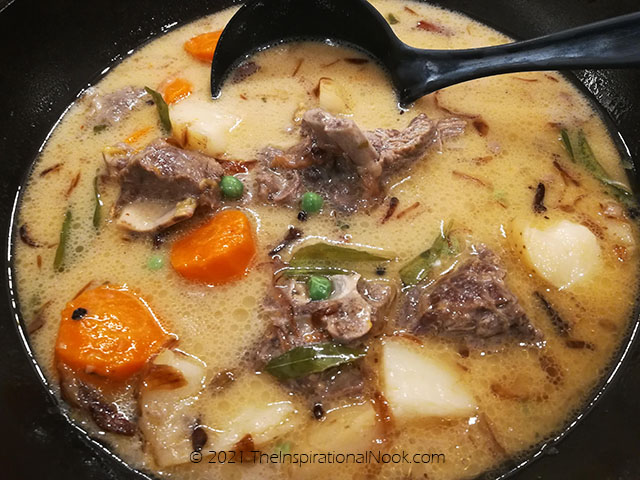Dry Prawn Fry | Unakka Chemeen
My first taste of crispy Dry Prawn Fry was in Uncle H.'s house in Fort Kochi (Cochin). It was destined not to be my last.
Every morning, Uncle H.'s man Friday would roar in on his motorcycle, twirl his very impressive handlebar moustache and declare with much enthusiasm what the menu for the day would be. Then, he'd ride off to the fish stalls by the water to pick up fresh seafood to cook for lunch.
He would whip up these regional culinary delights that would have us altering our sightseeing plans to rush home for lunch and dinner each day. Forget about dining at the Brunton Boatyard or Old Harbour Hotel when there was fried fish, unakka chemeen (dry prawn fry), kumbalanga curry and poppadums waiting for us at home. We'd be hard pressed to find these items on a restaurant menu. All said and done, there is just no substitute for simple, home cooked regional food.
DRY PRAWN FRY | UNAKKA CHEMEEN
Made with salted dried prawns, flavored with fried curry leaves, shallots and red chili, this little side dish is the magic ingredient that brings a simple luncheon meal to life. This salty, crispy condiment is the ideal accompaniment to hot rice, kumblanga (ash gourd) curry and poppadums. Mmmm just writing this is making my mouth water.
FISHING IN FORT KOCHI (COCHIN)
Fort Kochi (Fort Cochin) is a charming, sleepy seaside village on the west coast of India, in "God's Own Country" (also known as Kerala). One can spend hours wandering the quiet lanes lined with Portuguese and Dutch style homes or visiting churches and boutique stores with equal abandon. Admiring remnant artwork from past Kochi-Muziris Biennales, ambling lazily beneath canopies of rain flower trees or stopping for a cup of tea at 'Tea Pot' or otherwise are all part of meanderings in Fort Cochin.
 |
| Just in case you forget, street signs remind you that you're in God's Own Country. |
However, early in the mornings, when it's quiet everywhere else in Fort Cochin, the sea front is a hub of activity. The fishermen have displayed their catch, the fish auction is in full swing and individual buyers are milling around and haggling for a good price.
This stretch is lined with huge Chinese fishing nets that are unique to only this part of India. Introduced by the Chinese in the 14th century, this unusual style of fishing is how the fisher folk of Cochin still fish to this day.
 |
| A Chinese fishing net in Fort Cochin |
 |
| A Chinese fishing net with it's net raised out of the water. |
It really is a beautiful sight to behold as these majestic nets are slowly raised out of the water to the chorus of hungry crows, herons and cats all moving in a little closer to inspect the catch and see if they can score a little something for themselves as well. The fisherman scoops out the catch using a small container and then the net is slowly lowered back into the water. The fresh catch is quickly sold to passing buyers and the smaller left over prawns are dried and salted for a rainy day.
These are the daily charming rhythms of Fort Cochin that have not changed in centuries and that will both fascinate and mesmerize you if you let them.
And this is where Man Friday comes to pick up our fish and crustaceans for lunch.
Here's a video of the how the nets operate.
And here's the recipe for crispy dry prawn fry made the Fort Cochin way. It's so quick to prepare and really lights up an otherwise vegetarian meal that it's become quite the feature at my dinner table now.
DRY PRAWN FRY - UNAKKA CHEMEEN RECIPE
INGREDIENTS:
Serves: 2
☐ Shallots- 1/4 cup chopped
☐ Kashmiri chili powder- 1 1/2 teaspoons
☐ Red Chili Flakes- 1/4 teaspoon
☐ Curry leaves- 5-6
☐ Salt to taste
METHOD:
Step 1: ROAST THE DRY PRAWNS
Clean, wash and sun dry the dried prawns before using.
On a hot tawa, dry roast the prawns lightly for a minute or two. Remove the prawns from the tawa and discard all the little bits and legs that fall off from the prawns. Set the roasted prawns aside.
Step 2: FRY THE PRAWNS
In a wok, add 4 tablespoons of coconut oil. When the oil is hot, add the roasted prawns and deep fry until the prawns are crispy. Remove the prawns from the wok and set aside.
Step 3: FRY THE MASALA
Combine the chopped shallots, chili flakes and Kashmiri chili powder, with a little salt and smash it all with a mortar and pestle to get a coarse masala paste.
Add more coconut oil to the wok. When hot, add the masala paste and fry lightly. Add the curry leaves and fry lightly. Take care not to burn the masala.








